Jiaqi Wen
How the use of feature selection methods influences the efficiency and accuracy of complex network simulations
Dec 02, 2024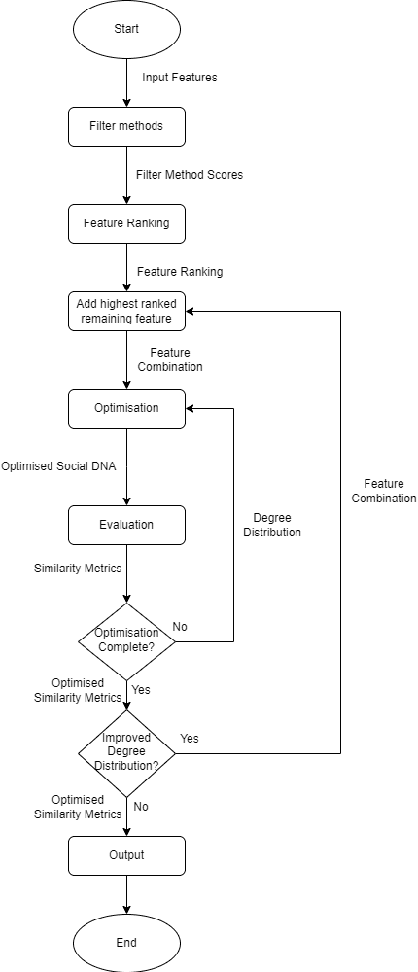
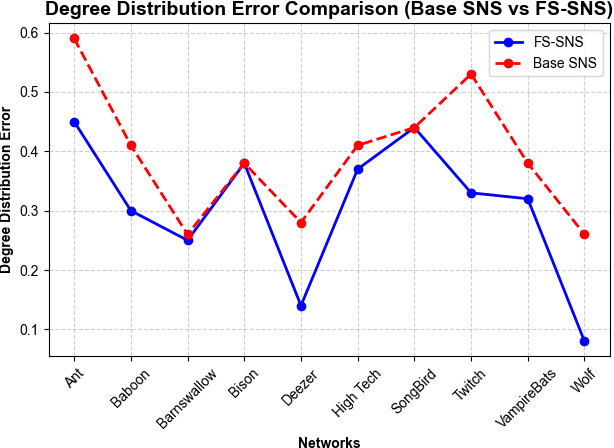
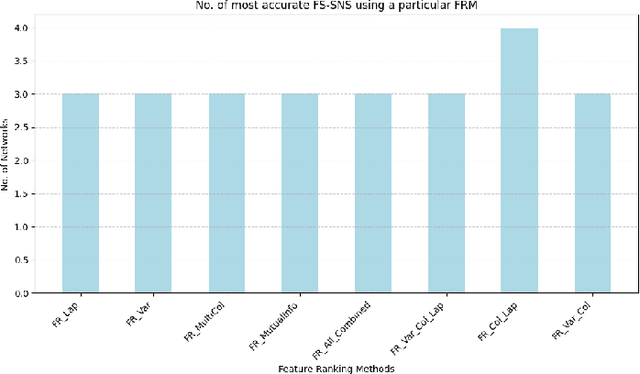
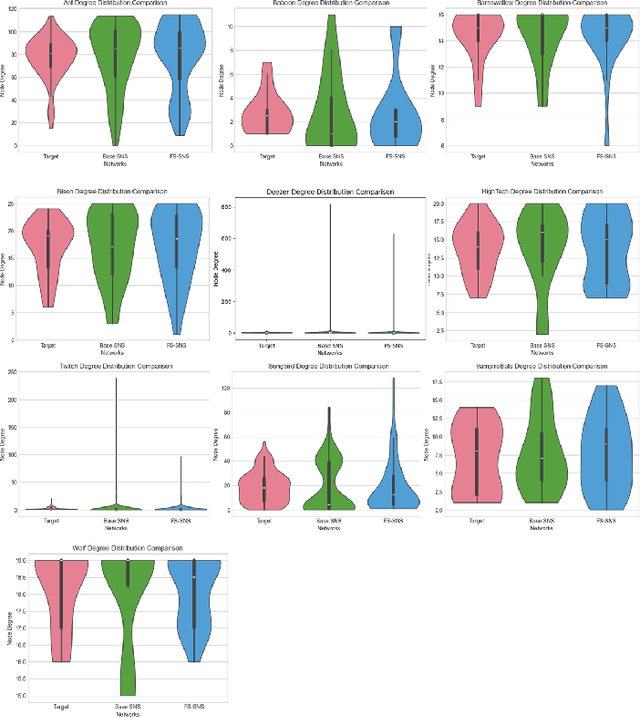
Abstract:Complex network systems' models are designed to perfectly emulate real-world networks through the use of simulation and link prediction. Complex network systems are defined by nodes and their connections where both have real-world features that result in a heterogeneous network in which each of the nodes has distinct characteristics. Thus, incorporating real-world features is an important component to achieve a simulation which best represents the real-world. Currently very few complex network systems implement real-world features, thus this study proposes feature selection methods which utilise unsupervised filtering techniques to rank real-world node features alongside a wrapper function to test combinations of the ranked features. The chosen method was coined FS-SNS which improved 8 out of 10 simulations of real-world networks. A consistent threshold of included features was also discovered which saw a threshold of 4 features to achieve the most accurate simulation for all networks. Through these findings the study also proposes future work and discusses how the findings can be used to further the Digital Twin and complex network system field.
Deep Reinforcement Learning for Digital Twin-Oriented Complex Networked Systems
Nov 09, 2024Abstract:The Digital Twin Oriented Complex Networked System (DT-CNS) aims to build and extend a Complex Networked System (CNS) model with progressively increasing dynamics complexity towards an accurate reflection of reality -- a Digital Twin of reality. Our previous work proposed evolutionary DT-CNSs to model the long-term adaptive network changes in an epidemic outbreak. This study extends this framework by proposeing the temporal DT-CNS model, where reinforcement learning-driven nodes make decisions on temporal directed interactions in an epidemic outbreak. We consider cooperative nodes, as well as egocentric and ignorant "free-riders" in the cooperation. We describe this epidemic spreading process with the Susceptible-Infected-Recovered ($SIR$) model and investigate the impact of epidemic severity on the epidemic resilience for different types of nodes. Our experimental results show that (i) the full cooperation leads to a higher reward and lower infection number than a cooperation with egocentric or ignorant "free-riders"; (ii) an increasing number of "free-riders" in a cooperation leads to a smaller reward, while an increasing number of egocentric "free-riders" further escalate the infection numbers and (iii) higher infection rates and a slower recovery weakens networks' resilience to severe epidemic outbreaks. These findings also indicate that promoting cooperation and reducing "free-riders" can improve public health during epidemics.
Heterogeneous Feature Representation for Digital Twin-Oriented Complex Networked Systems
Sep 23, 2023
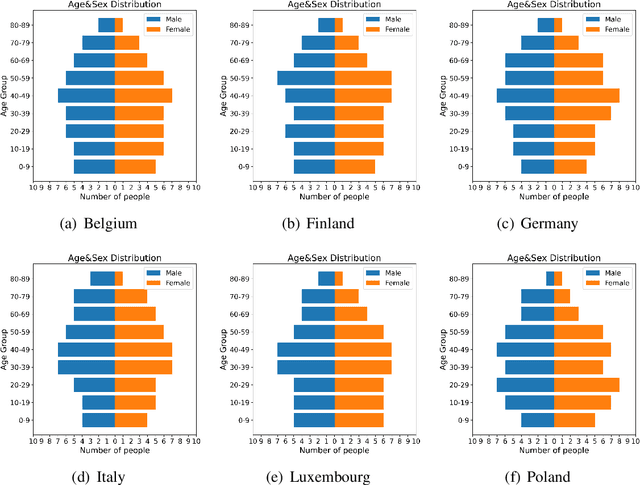
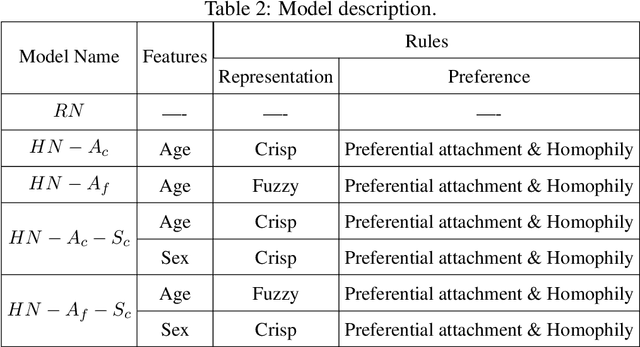

Abstract:Building models of Complex Networked Systems (CNS) that can accurately represent reality forms an important research area. To be able to reflect real world systems, the modelling needs to consider not only the intensity of interactions between the entities but also features of all the elements of the system. This study aims to improve the expressive power of node features in Digital Twin-Oriented Complex Networked Systems (DT-CNSs) with heterogeneous feature representation principles. This involves representing features with crisp feature values and fuzzy sets, each describing the objective and the subjective inductions of the nodes' features and feature differences. Our empirical analysis builds DT-CNSs to recreate realistic physical contact networks in different countries from real node feature distributions based on various representation principles and an optimised feature preference. We also investigate their respective disaster resilience to an epidemic outbreak starting from the most popular node. The results suggest that the increasing flexibility of feature representation with fuzzy sets improves the expressive power and enables more accurate modelling. In addition, the heterogeneous features influence the network structure and the speed of the epidemic outbreak, requiring various mitigation policies targeted at different people.
Digital Twin-Oriented Complex Networked Systems based on Heterogeneous node features and interaction rules
Aug 18, 2023Abstract:This study proposes an extendable modelling framework for Digital Twin-Oriented Complex Networked Systems (DT-CNSs) with a goal of generating networks that faithfully represent real systems. Modelling process focuses on (i) features of nodes and (ii) interaction rules for creating connections that are built based on individual node's preferences. We conduct experiments on simulation-based DT-CNSs that incorporate various features and rules about network growth and different transmissibilities related to an epidemic spread on these networks. We present a case study on disaster resilience of social networks given an epidemic outbreak by investigating the infection occurrence within specific time and social distance. The experimental results show how different levels of the structural and dynamics complexities, concerned with feature diversity and flexibility of interaction rules respectively, influence network growth and epidemic spread. The analysis revealed that, to achieve maximum disaster resilience, mitigation policies should be targeted at nodes with preferred features as they have higher infection risks and should be the focus of the epidemic control.
Range Resolution Enhanced Method with Spectral Properties for Hyperspectral Lidar
Mar 03, 2023Abstract:Waveform decomposition is needed as a first step in the extraction of various types of geometric and spectral information from hyperspectral full-waveform LiDAR echoes. We present a new approach to deal with the "Pseudo-monopulse" waveform formed by the overlapped waveforms from multi-targets when they are very close. We use one single skew-normal distribution (SND) model to fit waveforms of all spectral channels first and count the geometric center position distribution of the echoes to decide whether it contains multi-targets. The geometric center position distribution of the "Pseudo-monopulse" presents aggregation and asymmetry with the change of wavelength, while such an asymmetric phenomenon cannot be found from the echoes of the single target. Both theoretical and experimental data verify the point. Based on such observation, we further propose a hyperspectral waveform decomposition method utilizing the SND mixture model with: 1) initializing new waveform component parameters and their ranges based on the distinction of the three characteristics (geometric center position, pulse width, and skew-coefficient) between the echo and fitted SND waveform and 2) conducting single-channel waveform decomposition for all channels and 3) setting thresholds to find outlier channels based on statistical parameters of all single-channel decomposition results (the standard deviation and the means of geometric center position) and 4) re-conducting single-channel waveform decomposition for these outlier channels. The proposed method significantly improves the range resolution from 60cm to 5cm at most for a 4ns width laser pulse and represents the state-of-the-art in "Pseudo-monopulse" waveform decomposition.
Towards Digital Twin Oriented Modelling of Complex Networked Systems and Their Dynamics: A Comprehensive Survey
Feb 15, 2022



Abstract:This paper aims to provide a comprehensive critical overview on how entities and their interactions in Complex Networked Systems (CNS) are modelled across disciplines as they approach their ultimate goal of creating a Digital Twin (DT) that perfectly matches the reality. We propose a new framework to conceptually compare diverse existing modelling paradigms from different perspectives and create unified assessment criteria to assess their respective capabilities of reaching such an ultimate goal. Using the proposed criteria, we also appraise how far the reviewed current state-of-the-art approaches are from the idealised DTs. We also identify and propose potential directions and ways of building a DT-orientated CNS based on the convergence and integration of CNS and DT utilising a variety of cross-disciplinary techniques.
How to eliminate detour behaviors in E-hailing: On-line detection and Pricing regulation
Oct 17, 2019
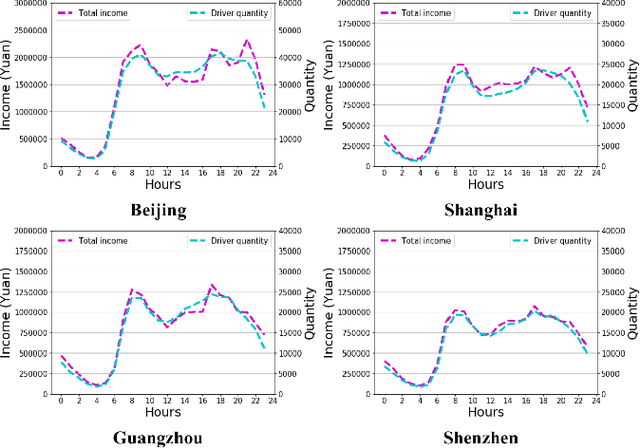
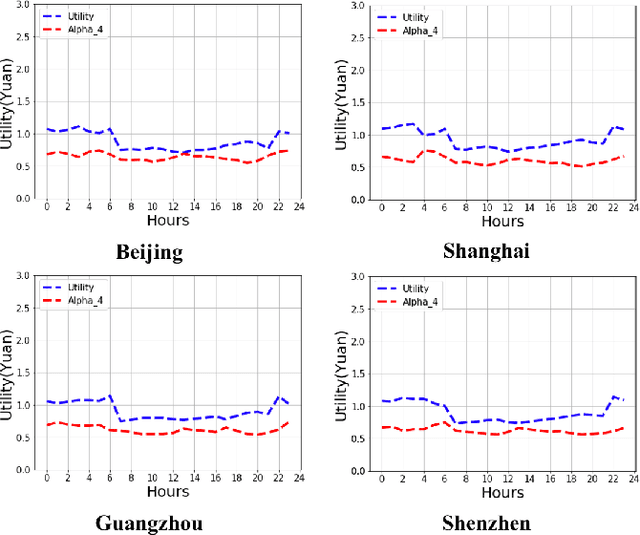
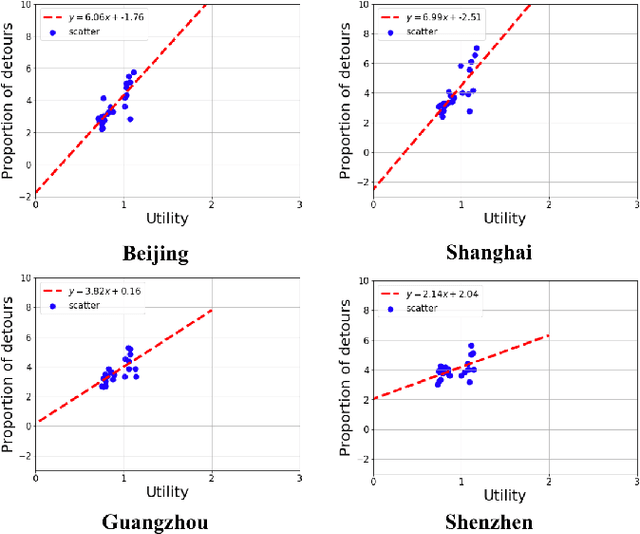
Abstract:With the fast development of information and communication technology (ICT), taxi business becomes a typical electronic commerce mode. However, one traditional problem still exists in taxi service, that greedy taxi drivers may deliberately take unnecessary detours to overcharge passengers. The detection of these fraudulent behaviors is essential to ensure high-quality taxi service. In this paper, we propose a novel framework for detecting and analyzing the detour misbehaviors both in off-line database and among on-line trips. Applying our framework to real-world taxi data, a remarkable performance (AUC > 0.98, 100% of detour trajectories can be detected at less than 10% false alarm rate) has been achieved in off-line phases, meanwhile, an excellent precision (AUC > 0.9) also has arrived in on-line detection. In additional, some constructive suggestions upon pricing regulation are also provided to control the happening of detours. Finally, some commercial value-added applications in DiDi benefited from our method have yielded good results to improve the map service.
 Add to Chrome
Add to Chrome Add to Firefox
Add to Firefox Add to Edge
Add to Edge